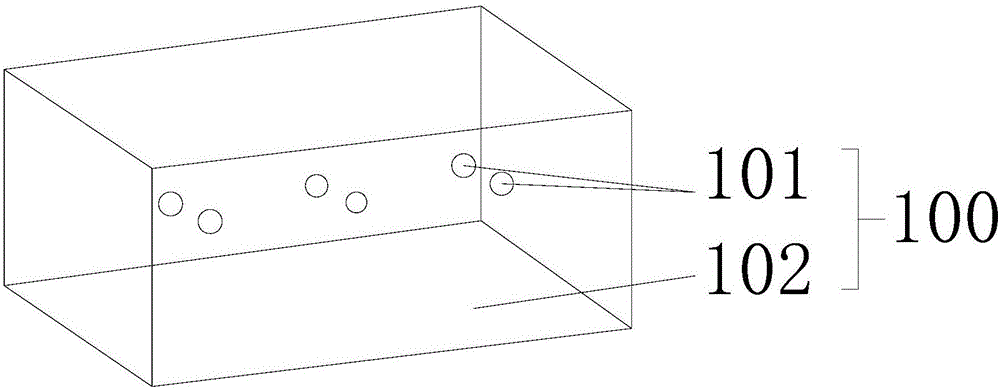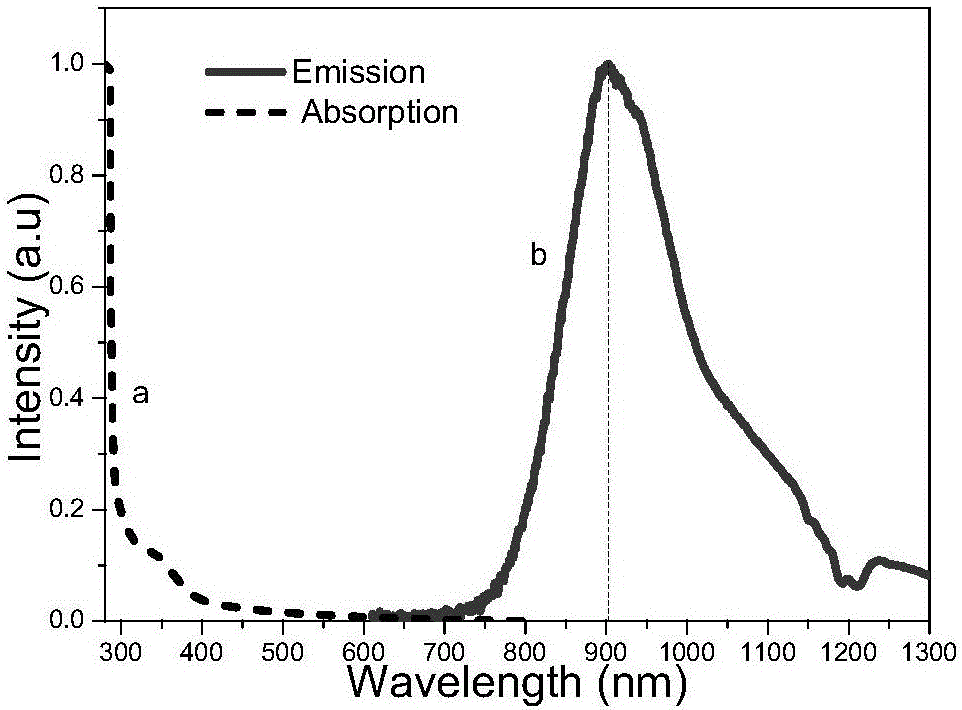Photo-conversion quantum dot, solar light collector and solar light collection device
A solar concentrator and solar concentrator technology, applied in the field of solar power generation, can solve the problems of low efficiency, low light transmittance, high fluorescence quantum yield, etc., and achieve high optical absorption coefficient, high light conversion efficiency, and light absorption coefficient high effect
- Summary
- Abstract
- Description
- Claims
- Application Information
AI Technical Summary
Problems solved by technology
Method used
Image
Examples
preparation example 1
[0072] (a) Weigh 0.17g AgNO 3 and 0.3g In(Ac) 3 , into a 50mL three-necked flask, measure 5mLDDT and 1mL OLA, add them in turn to the three-necked flask, stir and mix evenly, after vacuum degassing for 1 hour, switch to the protection state of continuous passage of inert gas, and increase the temperature until all solid precursors substance fully dissolved. Prepare a 2 mmol / mL Se-OLA / DDT solution with selenium powder, OLA and DDT solutions in an argon atmosphere at room temperature. The flask filled with argon was heated to 210°C, 2ml of Se-OLA / DDT solution was dropped into it, and kept for 10 minutes to nucleate the quantum dots, then raised to 230°C and kept for 10 minutes, then cooled to 190°C to obtain AgInSe 2-x S x Nuclear quantum dots (AISeS QDs), to be used;
[0073] (b) Add zinc stearate, sulfur powder and TOP solution to a 25mL three-neck flask, degas the solution in vacuum for 20 minutes, then switch to a state filled with nitrogen and heat to 100°C until the zi...
preparation example 2
[0079] (a) Weigh 0.17g AgNO 3 and 0.3g In(Ac) 3 , into a 50mL three-necked flask, measure 5mL DDT and 1ml OLA, add them in turn to the three-necked flask, stir and mix evenly, after vacuum degassing for 1 hour, switch to the protection state of continuous passage of inert gas, raise the temperature until all solid Precursors are fully dissolved. Prepare a 2 mmol / mL Se-OLA / DDT solution with selenium powder, OLA and DDT solutions in an argon atmosphere at room temperature. The flask filled with argon was heated up to 210°C, 2mL of Se-OLA / DDT solution was dropped into it, and kept for 10 minutes to nucleate the quantum dots, then raised to 230°C and kept for 10 minutes, then cooled to 190°C to obtain AgInSe2-xSx nuclei Quantum dots (AISeS QDs), to be used;
[0080] (b) Add zinc stearate, sulfur powder and TOP solution to a 25mL three-neck flask, degas the solution in vacuum for 20 minutes, then switch to a state filled with nitrogen and heat to 100°C until the zinc stearate an...
preparation example 3
[0087] The difference from Preparation Example 1 is only that the equal volume of OLA in step (a) is replaced by liquid paraffin.
PUM
 Login to View More
Login to View More Abstract
Description
Claims
Application Information
 Login to View More
Login to View More - R&D
- Intellectual Property
- Life Sciences
- Materials
- Tech Scout
- Unparalleled Data Quality
- Higher Quality Content
- 60% Fewer Hallucinations
Browse by: Latest US Patents, China's latest patents, Technical Efficacy Thesaurus, Application Domain, Technology Topic, Popular Technical Reports.
© 2025 PatSnap. All rights reserved.Legal|Privacy policy|Modern Slavery Act Transparency Statement|Sitemap|About US| Contact US: help@patsnap.com



